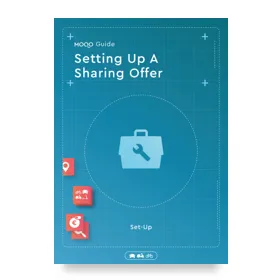
3 min read • October 6, 2022
What determines the success of a shared mobility service? Answers often include "the city," "the local competition," or "the financial situation". These may all be factors that providers should take into account. But they alone do not ultimately define "win or lose." The following points are not only equally important success factors, but can even be actively influenced by you.
Best Practice
In no business field is it helpful to rest on external circumstances or to blame them as the only reason why a plan did not work out. It is better to keep asking oneself which screws one has in one's own hands.
It is true that local conditions and the financial situation of a provider do make a difference. But mainly in terms of how you build your offer, not whether you have any chance of success. Rather, look for the things that you can control and work on self-effectively. You can find some examples here.
You don't have to do everything on your own - nor should you. Look for partners, for example in terms of analysis tools, vehicle procurement, maintenance and repair, software or operations. Synergies with other providers may also be an option. A good relationship with your local government is helpful for the acceptance of your vehicles and the allocation of parking spaces in public areas. And networking with local organizations, clubs and associations helps to make your offer known to certain groups of people or to gain anchor customers.
Strong collaborations in shared mobility →
Many design aspects of your offer depend on your target group. Don't just launch a new offer, know exactly who you want to reach with it. The better you know your target customers, the more precisely you can meet their expectations and needs. And the more likely they are to feel addressed and picked up by you.

Vehicles, software systems, insurance, employees, marketing - all this costs money. Money that you need to earn back. Always keep an eye on your costs and observe to what extent your revenues cover them. Especially in the beginning, it's a good idea to keep a certain amount of frugality. This may mean putting a smaller fleet on the road first and not launching a large-scale marketing campaign right away. Regular cost control helps you to readjust at any time and make modifications to your expenses and tariffs.
You don't have to do things differently than your competitors. It's enough to simply do them better. Internal processes can quickly turn out to be time wasters and cost drivers if they are designed inefficiently. To prevent this, there is a solution: Operational Excellence. Especially if you are still at the very beginning, it is up to you to prevent inefficient structures from arising in the first place.
More about Operational Excellence ⟶

Efficiency also lays the foundation for another important point: scalability. Design your operation so that increasing your supply does not mean proportionally more effort. Start with just a few vehicles and scale up gradually. That way, you'll notice right away when your processes or software system reach a limit.
How to scale your sharing business ⟶
Not everyone who is generally interested in what you have to offer will become an active user overnight. For many people, switching to shared mobility requires time and regular external encouragement. Don't be disconcerted if your user numbers stagnate or grow only slowly in the meantime. Keep at it and allow yourself a test phase of around two years, during which you constantly improve your offering and regularly measure it against your target group. Only a few providers are profitable right from the start. Be patient!

Good shared mobility offers are those that have been thought through from start to finish. Which are geared to both local specifics and the needs of the chosen target group.
And because it is difficult, especially at the beginning, to get an overview of all the important questions and decision areas, we have written a guide. This should help you to orient yourself as a shared mobility provider and to find initial answers.

Our guide will help you stay on top of things as you build your sharing offering. Learn what matters and what you should think about.